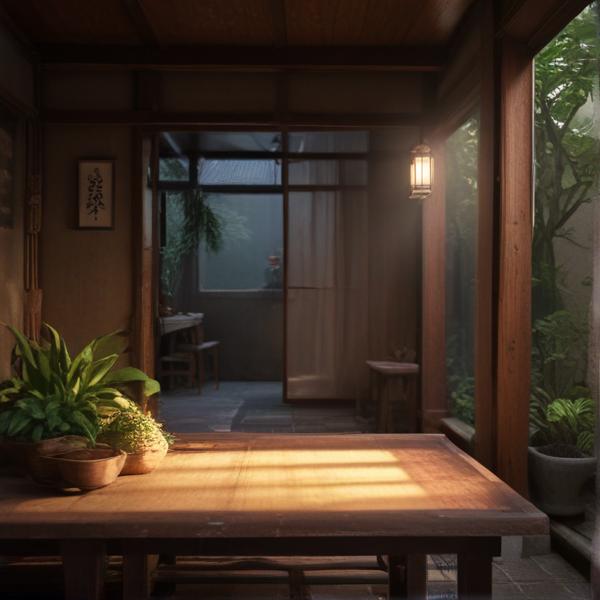基本信息 (Basic Information)
含义与用法 (Meanings & Usage)
中文核心释义 (Core Chinese Meaning): 侧屋,房屋主体两侧较小的房间或部分,也指车厢。
英文核心释义 (Core English Meaning): side room; wing of a house; carriage compartment
象形意义 / 为何这么写 (Pictographic Meaning / Writing Rationale)
文言文释义 (Classical Chinese Meaning)
与现代意义相近,指房屋两侧的侧屋。Similar to modern meaning, referring to the side rooms of a building.
深入学习 (In-depth Study)
字源故事 (Origin Story)
字形演变 (Character Evolution)
常用词语和例句 (Common Words & Examples)
车厢 (carriage (of a train, car, or bus); compartment)
列车的每节车厢都有空调。
Eng: Every carriage of the train is air-conditioned.
东厢 (east wing (of a building))
她住在院子的东厢房。
Eng: She lives in the east wing of the courtyard.
厢房 (side room; wing room)
老宅的厢房用来存放杂物。
Eng: The side rooms of the old house are used for storing sundries.
相关成语 (Related Idioms)
相关成语信息待补充。Related idiom information pending.
多语言翻译 (核心释义) (Translations (Core Meaning))
- French: aile (d'une maison), compartiment, wagon
- German: Seitenzimmer; Abteil; Wagenkasten
- Spanish: ala (de una casa), compartimento, vagón
- Italian: ala (di una casa), compartimento, carrozza
- Portuguese: ala lateral (de uma casa), compartimento, vagão
- Russian: флигель; боковая комната; вагон
- Arabic: جناح (منزل)، مقصورة، عربة
- Persian: بال جانبی (خانه)، کوپه، واگن
- Dutch: zijvleugel (van een huis); compartiment; wagon
- Polish: skrzydło (domu), przedział, wagon
- Vietnamese: phòng bên cạnh, toa xe, khoang
- Ukrainian: флігель; бічна кімната; вагон
视频学习资源 (Video Learning Resources)
通过以下链接在热门视频网站搜索 "厢" 的更多讲解:
Search for more explanations of "厢" on popular video sites:
- 在 Bilibili.com 搜索 "厢 字源 说文解字" (Search on Bilibili)
- 在 YouTube.com 搜索 "xiang character origin etymology" (Search on YouTube)
网络参考 (Web References for "厢") ()
网络内容摘要 (Web Content Summary):
-
核心含义:“厢”主要指堂屋前东西两侧的廊房,即住宅中主屋两侧的房间或厢房。 Core meaning: "厢" mainly refers to the side rooms or wings on the east and west sides of the main hall in traditional Chinese residences.
-
象形起源及文化背景:“厢”字最早见于甲骨文,原本与“相”同形,表示“观察”。后来意义演变,指代建筑的边侧房间。这反映了中国古代建筑结构的特点。 Pictographic origin & cultural background: The earliest forms of "厢" appeared in oracle bone inscriptions, originally sharing a form with "相" and meaning "to observe". Its meaning later shifted to side rooms, illustrating features of traditional Chinese architecture.
-
常用词及易混淆:“厢房”、“东厢”、“西厢”等词常用于描述房屋结构。需注意“厢”与“箱”(箱子)、“相”(互相)的字形及含义不同。 Common words & confusion: Common compounds include "厢房" (side room), "东厢" (east wing), "西厢" (west wing). Be careful not to confuse "厢" with similar-looking characters such as "箱" (box) or "相" (mutual).
补充:尚未查到该字相关成语或特别使用的成语典故。如有需要了解,可参考成语词典。 Supplement: There do not appear to be idioms or well-known set phrases that use this character directly. For further details, consult an idiom dictionary.
厢《汉字字源》_汉字「厢」_厢在汉字字源中的解释 - 国学大师
厢《汉字字源》,汉字「厢」,厢在汉字字源中的解释,国学大师,汉语字典 明清实录 | 二十四史 | 四库全书 | 古今图书集成 | 历史人物 | 说文解字 | 成语词典 | 甲骨文合集 | 殷周金文集成 | 象形字典 | 十三经索引 | 字体转换器 | 篆书识别 | 近义反义词 | 对联大全 ...
【厢,廂】的甲骨文金文篆文字形演变含义 - 甲骨文研究网 甲骨文密码字典 在线甲骨文字典研究 - 甲骨文研究网 甲骨文密码字典 在线甲骨文字典 ...
汉字的来历和演变(說文解字 篆體字)甲骨文密码【甲骨密码】 【其他解读】相,表示观察。 ... 附 白话版《说文解字》:厢,堂屋前东西两侧的廊房。 ... 汉字甲骨文破译字典》一书中,破解的古诗、竹简等古文作品收录在《新编甲骨文破译案例解析 ...
更多图片 (厢 More Images) ()
